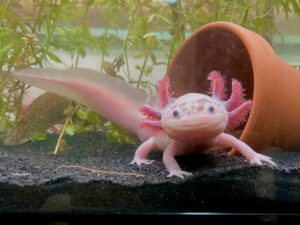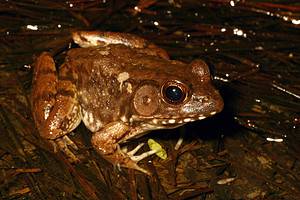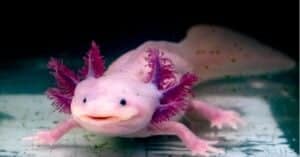If you’re looking for some fascinating frog facts, you’ve come to the right place! Here are 10 incredible facts about frogs that might make your eyes drop into your mouth. No, wait, that’s what frog eyes do! From their unique anatomy to their impressive jumping abilities, there’s a lot to learn about these incredible creatures.
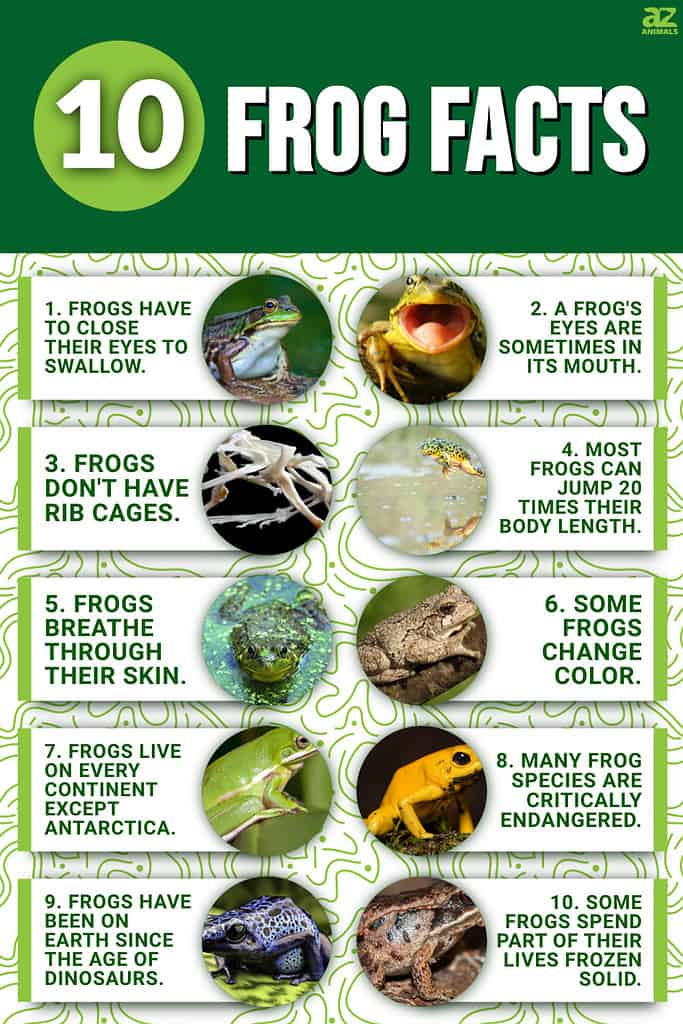
Do you know why frogs have to close their eyes when they swallow? Or that some frogs spend part of their lives frozen like a popsicle? Keep reading to learn the answers to frog questions like these and more.
1. Frogs have to close their eyes to swallow.
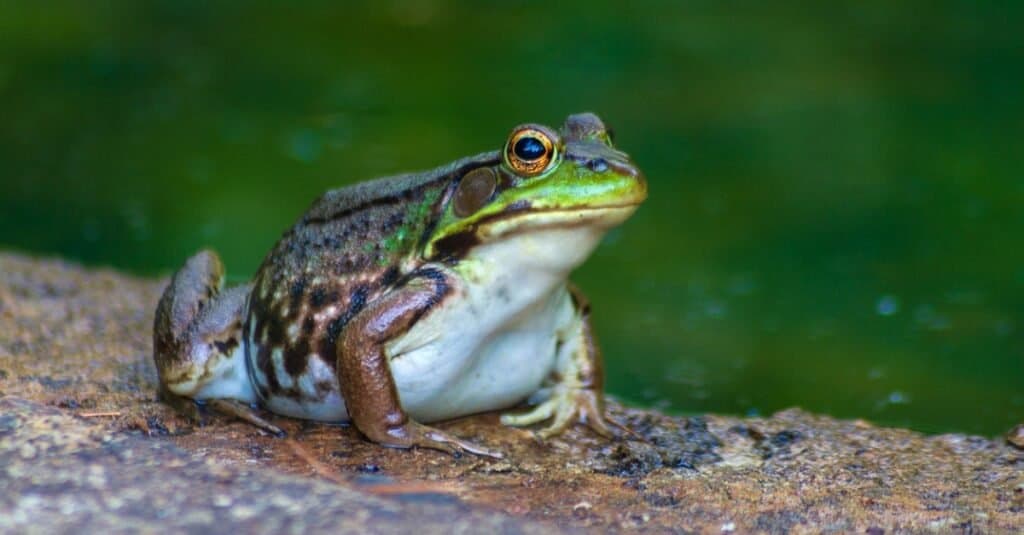
An incredible fact about frogs is that they must close their eyes to swallow.
©iStock.com/Corey T. Burns
When a frog wants to swallow something, it has to close its eyes. This action is necessary because the muscles controlling the movement of the lower jaw sit behind the eye sockets. So, when the frog wants to move its lower jaw down, it first has to close its eyes.
But a frog doesn’t just close its eyes when it swallows its favorite foods like crickets and mealworms. Instead, its eyes move to a shocking location — inside its mouth!
2. A frog’s eyes are sometimes in its mouth.
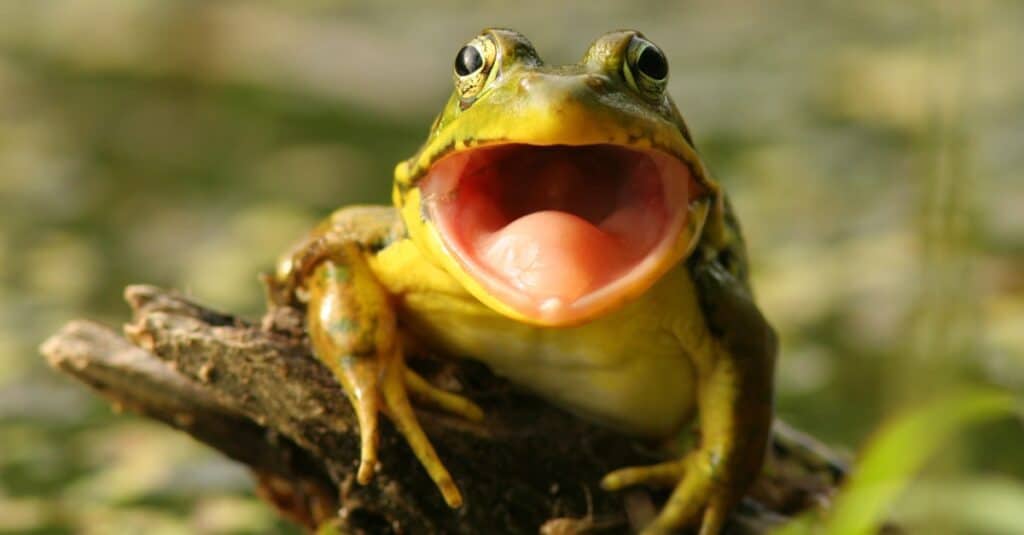
Frog eyes roll down into the roof of their mouth when they swallow.
©iStock.com/BrianLasenby
When a frog swallows, its eyes roll back and down into its mouth. This eye motion happens because the bones in the frog’s skull are not fused together, which allows for more movement. Additionally, the muscles that control a frog’s unique eyes are attached to the jawbone, so when the jaw moves, the eyes move with it.
This function may seem like a strange way to swallow, but it actually helps the frog to get a better grip on its prey. When the eyes are in the mouth, they help to push the food down the throat and into the stomach.
So, why do other animals not have their eyes in their mouths when they swallow? Well, most animals have fused skull bones, which limits the movement of the eyes. Additionally, the muscles that control the eyes in most animals are not attached to the jawbone. The function of this anatomy means that when the jaw moves, the eyes do not move with it.
3. Frogs don’t have rib cages.
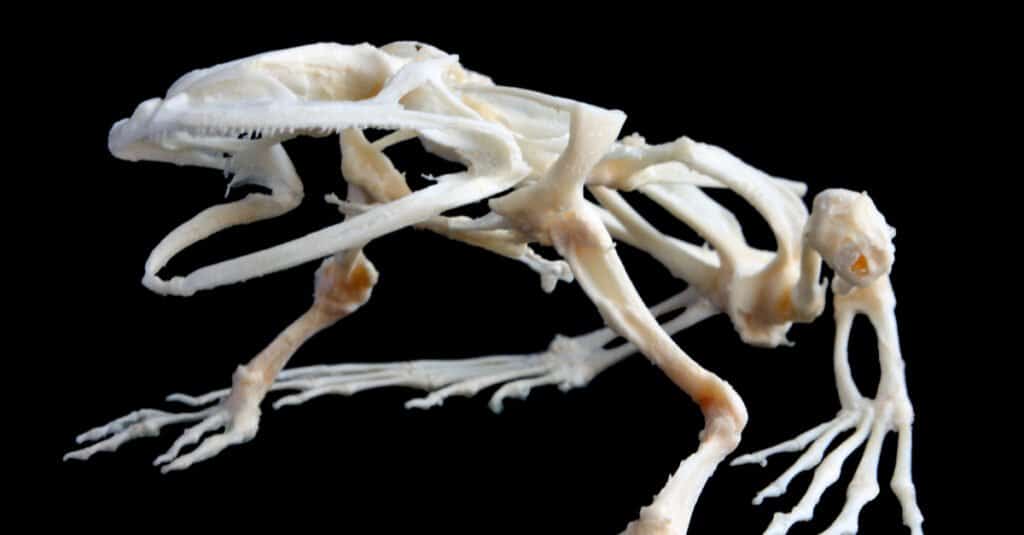
A frog has strong bones, but no rib cage.
©photowind/Shutterstock.com
When you carefully hold a frog, you might notice that its body is rather squishy. This squishiness is because though frogs are vertebrates (an animal with a backbone), they don’t have rib cages. Instead, their bodies are mostly soft and flexible. This flexibility allows frogs to squeeze into small spaces and helps them to swim quickly through the water.
A vertebrate without a rib cage is very rare. Frogs are the only common vertebrate without a rib cage. Most other animals that lack a rib cage are invertebrates (animals without backbones) or fish.
Though a frog’s body is soft, it’s still a durable amphibian. A frog’s strength is essential because it needs to be able to jump quickly and far. Fortunately, its legs are very muscular and attached to its body with strong bones. The combination of a soft body and solid legs helps frogs to survive in the wild.
4. Most frogs can jump 20 times their body length.

Frogs can leap great distances compared to the size of their bodies.
©muhamad mizan bin ngateni/Shutterstock.com
Frogs are excellent jumpers because of their long, muscular legs. Their powerful leaps help frogs escape predators and catch prey. Some frog species can even jump above 10 feet (3 meters)! This remarkable ability is due to the frogs’ strong leg muscles and flexible joints.
Frogs are not the only animals that can jump high. Other animals such as kangaroos, grasshoppers, and fleas can also make impressive leaps. But what makes frogs unique is that they can jump so high compared to their body size. For example, a frog can jump 20 times its own body length, whereas a human can only jump about three times its body length.
According to Guinness World Records, the longest jump by a frog relative to the size of its body was in 1975 by a South African sharp-nosed frog named Ex Lax. This frog jumped 17 feet 6 inches — over 90 times the length of its body! Ex Lax’s jumping record took place at the Calaveras County Fair in California, which hosts an annual frog jumping contest that’s become famous worldwide.
Another long jumping frog is the striped rocket frog of Australia, which has very long legs. As a result, this frog can leap up to 6.5 feet or 36 times the length of its body. Other frogs that can jump long distances include the agile frog, which can also cover up to 6.5 feet in a single bound.
Frogs use their powerful legs to escape predators, catch prey, and find mates. When a frog feels threatened, it will often leap away to safety. The daily threats they face are why many frogs live near ponds or rivers, where they can make a quick getaway when needed.
5. Frogs breathe through their skin.
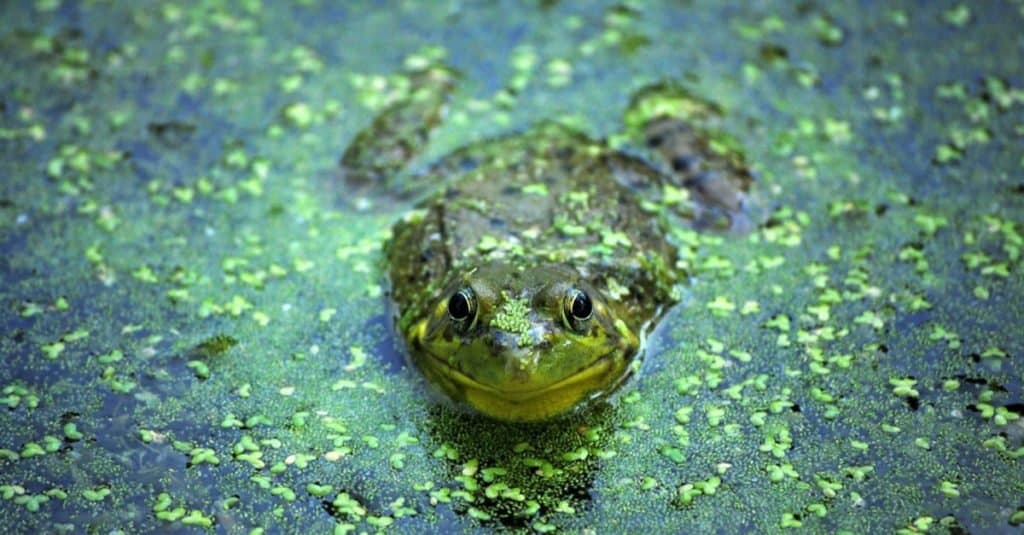
Frogs breathe through their skin, even underwater.
©tim elliott/Shutterstock.com
Frogs can breathe through their skin because of a thin layer of mucus that covers them. This mucus helps keep the frog’s skin moist and protects it from bacteria and other harmful organisms.
Special glands produce the mucus on a frog’s skin. These glands are located all over the frog’s body, but they are most concentrated on the frog’s head and back. The mucus produced by these glands flows down the frog’s body and covers its skin.
When a frog breathes underwater, the mucus on its skin helps to keep oxygen moving into its body. Oxygen enters the frog’s body through its skin and then travels to its lungs.
Frogs can also absorb water through their skin via an area on their belly called a drinking patch. This way of absorbing water is helpful because it allows them to stay hydrated even if they live in a dry environment.
6. Some frogs change color.
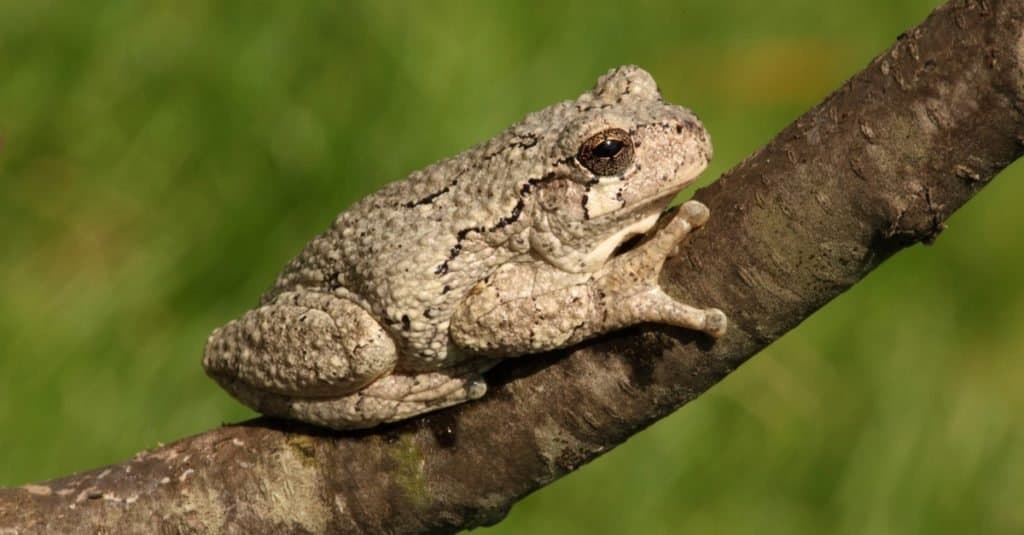
Gray tree frogs change color for camouflage.
©Steve Byland/Shutterstock.com
Frogs that change color do so for a variety of reasons. The most common reason is camouflage. For example, a gray tree frog will change its color to match the bark of a tree if it wants to avoid being seen by predators. Some frogs also change color to regulate their body temperature. For example, if a frog is too hot, it will usually become lighter in color to reflect more heat. Conversely, if a frog is cold, it will often become darker in color to absorb more heat.
Many different species of frogs change color, including the grey tree frog, the chameleon frog, and the clown tree frog. Some of these species can change their color very quickly. In contrast, others may take several days or even weeks to complete the transformation.
Frogs are not the only animals that change color. Many lizards and chameleons also change color to camouflage themselves or to regulate their body temperature.
If you love colorful frogs, check out our list of some of the prettiest frogs in the world.
7. Frogs live on every continent except Antarctica.

You can find frogs on every continent except Antarctica.
©LorraineHudgins/Shutterstock.com
Frogs adapt to a wide variety of habitats, from tropical rainforests to deserts. Frogs can live in different habitats on nearly all continents because they can breathe through their skin and lungs. This adaptability allows them to live in areas where there is very little water.
Frogs are ectothermic, meaning they rely on external sources of heat to regulate their body temperature. In cold environments, most frogs would not be able to keep their bodies warm enough to survive. Antarctica is the only continent with no frogs because it is too cold for them to survive.
However, it seems that frogs may have lived in Antarctica in the past. Recent fossils found on Seymour Island indicate that frogs may have lived in Antarctica about 40 million years ago!
8. Many frog species are critically endangered.
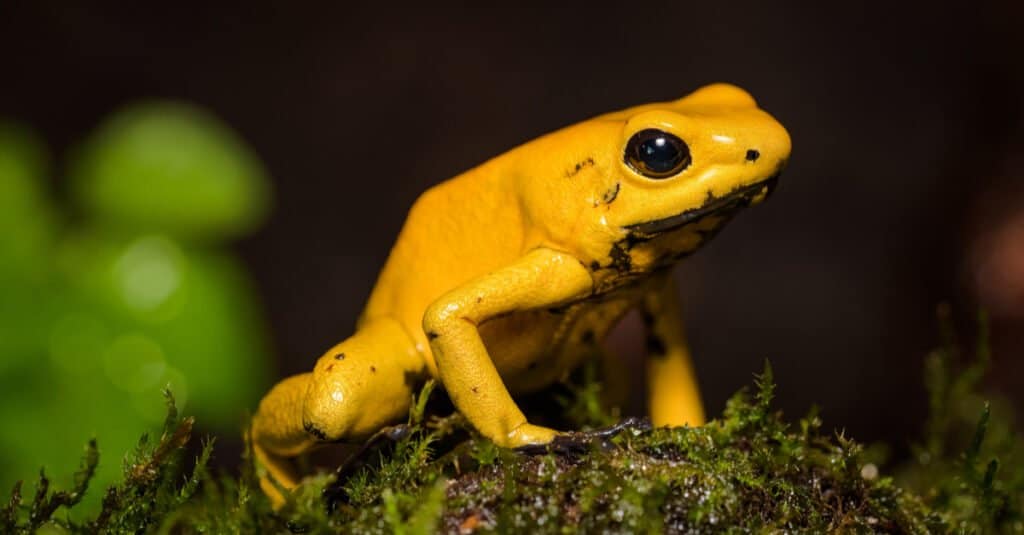
Golden Frogs are critically endangered.
©Thorsten Spoerlein/Shutterstock.com
The decline of frogs around the world is a cause for concern. Frogs are indicators of environmental health, and their declining numbers signify something is wrong. There are multiple reasons for frog population decline, including habitat loss, pollution, and climate change.
Many frog species have become critically endangered in recent years. One notable critically endangered frog species is the Golden Frog, native to Panama. Other endangered species include the Scarlet Frog, the Blue Poison Frog, and the Island Forest Frog. All of these species are victims of habitat loss or disease.
The Mountain Chicken Frog is another endangered species. This frog is native to the Caribbean islands of Montserrat and Dominica and is one of the biggest frogs in the world. Mountain Chicken Frogs were once common throughout the island, but their population has declined quickly in recent years. The primary threat to the Mountain Chicken Frog is a fungal disease called chytridiomycosis. Fortunately, this endangered frog species is currently bred in captivity in an effort to save it from extinction.
9. Frogs have been on Earth since the age of dinosaurs.
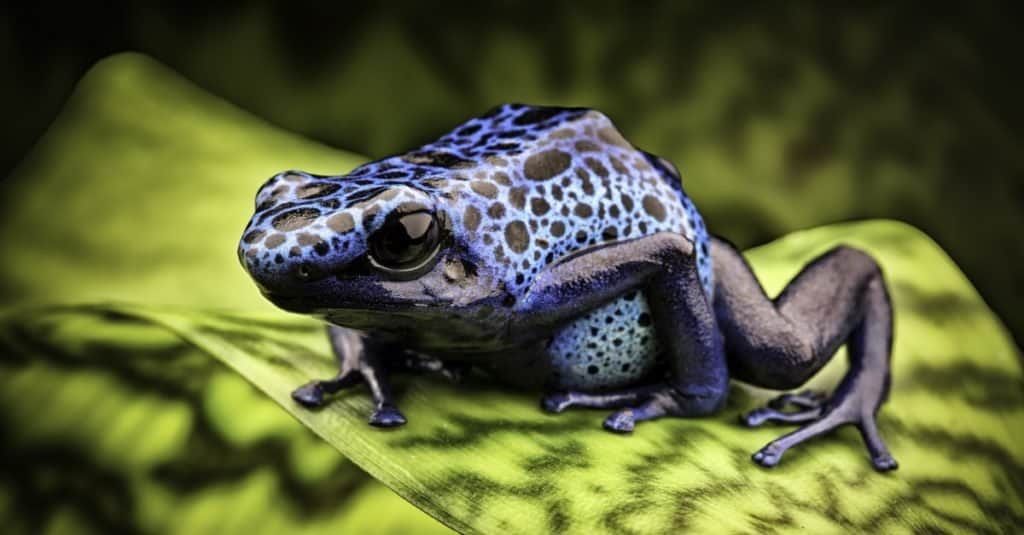
On Earth for 250 million years, frogs once lived alongside dinosaurs.
©Dirk Ercken/Shutterstock.com
Frogs are one of the most ancient groups of animals on Earth. Frogs first appeared on our planet about 250 million years ago. They were among the many animals that evolved during the Mesozoic Era, often called the Age of Dinosaurs.
Frogs are members of a group of animals called amphibians. Amphibians were the first vertebrates, or animals with backbones, to colonize the land. Frogs are well-adapted to life on land and in water.
Frogs have survived through the ages due to their adaptability and ability to thrive in various environments. Because of their adaptability, nearly 6,000 species of frogs are still living today despite increasing threats to frog health and habitats. However, conservation efforts to protect frogs are necessary to keep them around for another 250 million years.
10. Some frogs spend part of their lives frozen solid.
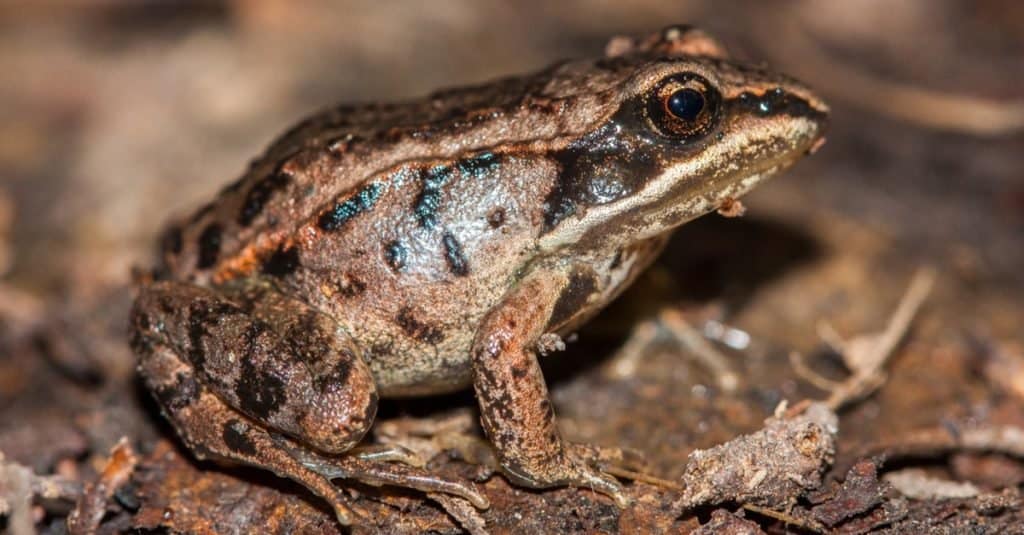
The wood frog’s body is frozen during the coldest weeks of the year.
©Viktor Loki/Shutterstock.com
Wood frogs survive in frozen bodies for weeks at a time. These frogs live in cold climates and are active during the spring and summer months when it is warm. During the autumn, the wood frog‘s body freezes solid. The frog’s heartbeat stops, and its breathing ceases. The wood frog can remain frozen for several months. In the spring, when the temperatures begin to rise, the wood frog thaws out and becomes active again.
How do some frogs survive their bodies shutting down while frozen? These hardy creatures can withstand sub-zero temperatures thanks to the high levels of glucose in their blood. This sugar helps to keep their cells from freezing and prevents them from dying even though their breathing stops temporarily.
Frozen frogs become active again when the temperatures rise and their bodies thaw. Fortunately, the process of freezing and thawing does not seem to harm these hardy creatures. Wood frogs, for example, live for up to seven years in the wild.
The ability to survive being frozen is an adaptation that helps these frogs survive in their cold habitats. Many frogs hibernate during the cold months in their natural habitats to outlive the freezing temperatures.
Frogs are incredible animals!
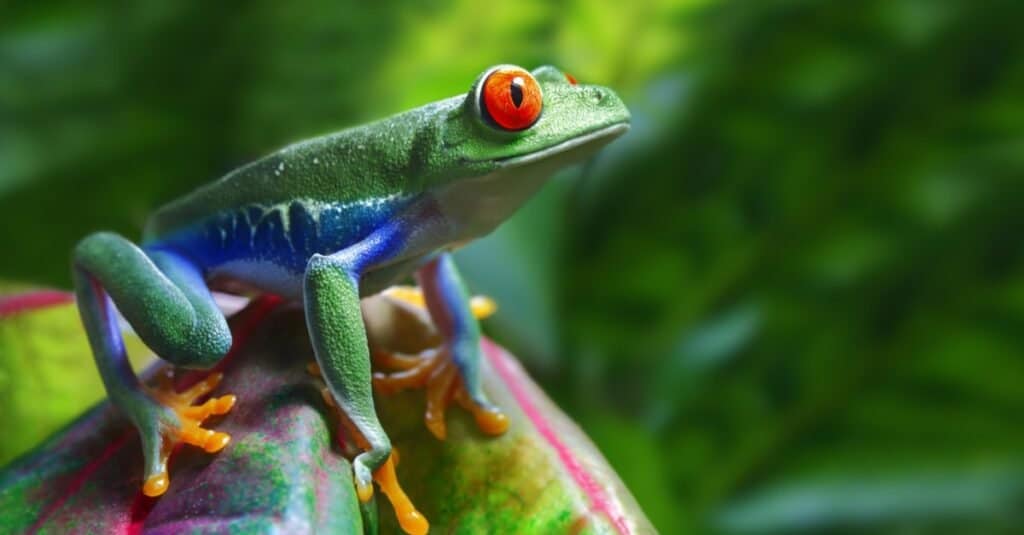
The Red-Eyed tree frog is one example of the over 6,000 frog species alive today.
©Brandon Alms/Shutterstock.com
Frogs are amazing amphibians with many adaptations that help them survive in different environments. We learned that they are indicator species, which means that their declining numbers are a sign that something is wrong with the environment. Frogs are also ancient animals, having first appeared on Earth over 250 million years ago. And we learned that some species of frogs even spend part of their lives frozen solid! While the loss of any species is cause for concern, the decline of frogs is especially alarming. These 10 incredible frog facts show just how unique and important these creatures are to our planet’s entire ecosystem.
The photo featured at the top of this post is © Milan Zygmunt/Shutterstock.com
Thank you for reading! Have some feedback for us? Contact the AZ Animals editorial team.



